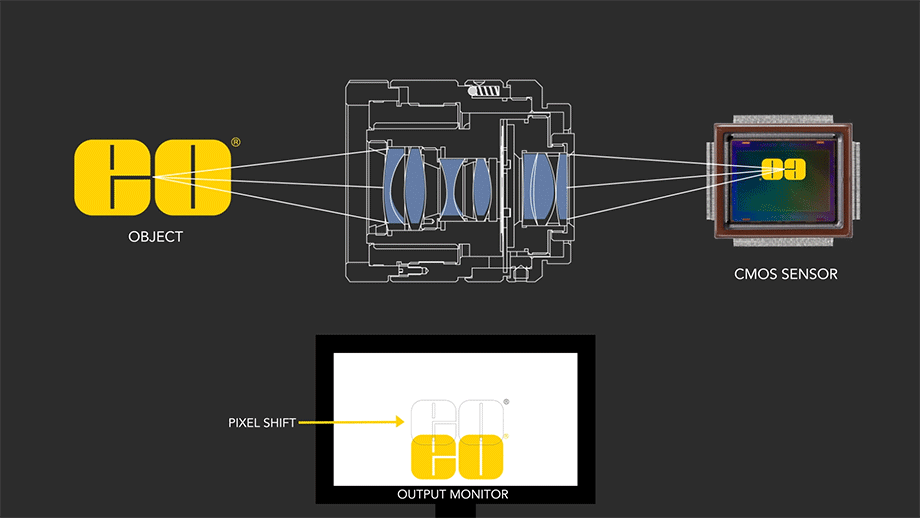
|
|
Imaging systems are being introduced into new environments for automation |
|
|
Many of these emerging applications experience harsh environments |
|
|
Machine vision lenses are evolving to maintain performance in these conditions |
|
|
Lenses are ruggedized for shock and vibration, water exposure, and temperature swings |
Automated systems have expanded into a vast array of industries, becoming increasingly important to modern life. From automated agricultural equipment, to robots working alongside manufacturing workers, to drones, machine vision systems are being deployed in new applications outside of traditional, controlled environments. These environments are often exposed to harsh conditions including shock and vibration, water spray, humidity, contaminants, and temperature swings. Machine vision lenses are already more robust than their prosumer counterparts, but additional ruggedization may be needed for challenging use cases. A new generation of machine vision lenses has emerged to meet these demanding conditions, allowing automated systems to meet high-performance requirements while braving whatever the world throws at them.
Traditional machine vision lenses are already designed to withstand the wear and tear of factory environments. They can be used for a long period of time and not fall apart. However, they are not necessarily designed to be put into machines, loaded onto trucks, dropped onto a factory floor, and used in conditions with additional shock, vibration, or contaminants. Factory environments may be harsh but they are often controlled, while other environments are not.
Conventional machine lenses feature multiple leaf irises for aperture adjustment and double-threaded focus mechanisms that make the lenses flexible and easy to adjust for different use cases (Figure 1). However, shocks and vibrations can shift these moving parts and cause unwanted pixel shift and resolution degradation. Water and other contaminants can leak into the lens assembly, making the lens unusable and even damaging the camera sensor behind the lens. Temperature swings also cause the glass lenses and metal housing to expand or contract, shifting the focus position and requiring the system to be refocused. As advancements in automation allow machine vision systems to be used in more harsh environments, all of these issues could decrease performance or render the lenses unusable. For example, automated agricultural equipment is exposed to shock and vibration from moving over uneven terrain, water spray and humidity in the air, and temperature swings from changing weather.

The simplest solution is often the best. Industrial ruggedization involves simplifying and streamlining lens mechanics for a more lightweight and space-conscious design, making them ideal for set-and-forget instrumentation and OEM application integration. This also prevents focus or f/# change while experiencing shock and vibration and reduces the number of moving mechanical parts. This makes industrially-ruggedized lenses more cost-effective than conventional lenses. Fixed aperture stops replace adjustable, multiple-leaf aperture irises. Single-threaded focusing mechanisms replace bulky, double-threaded focus mechanisms. However, while industrially-ruggedized lenses are both more cost effective and protected from shock and vibration their traditional counterparts, they offer less flexibility in adjusting lens parameters.

Stabilized ruggedization builds on the foundations of industrial ruggedization with more protective features put in place to protect the lens from shock and vibration. All individual glass elements inside the assembly are glued in place to maintain optical pointing stability. Shock and vibration can decenter lens elements inside of a conventional lens, causing the image to shift onto different pixels (Figure 3). Gluing all elements in place prevents this pixel shift and maintains performance in harsh environments.


Ingress protected ruggedization seals lenses to prevent water or solid particles from entering the housing. O-rings seal lenses that are already industrially ruggedized, as the moving parts of conventional lenses would compromise the seal. Ingress protected ruggedized lenses from Edmund Optics® are waterproof, meeting the International Electrotechnical Commission (IEC) ingress protection ratings of IPX7 and IPX9K. Pairing these lenses with waterproof cameras and illumination (when needed) protects the entire imaging system.

Thermally induced expansion and contraction of glass lens elements and their metal housing cause focal shift in machine vision lenses. This problem is particularly detrimental for aerospace applications or any other machine vision system exposed to significant temperature swings. There are two main methods for athermalizing lens assemblies: active athermalization and passive athermalization. Active athermalization involves physically adjusting the position of lens elements inside the housing using a feedback loop and motor to correct for thermal focal shift. Passive athermalization, on the other hand, leverages clever mechanical design and material selection to keep lens performance within its specified range throughout temperature swings without actively adjusting any elements. Steps are taken in the design of passively athermalized lenses to minimize the effects of thermal changes. Athermal ruggedized lenses from Edmund Optics are passively athermalized for temperatures from -10°C to 50°C without using exotic or expensive glass types (Figure 5). This maintains temperature over a wide range without unnecessarily increasing the system cost or complexity.

Edmund Optics designs and manufactures all types of ruggedized lenses described above that enable a wide variety of autonomous systems and other harsh environment machine vision applications. In-house environmental testing for shock and vibration, water exposure, and temperature swings allows for the replication of actual use cases. To inquire about custom ruggedized lenses tailored for your specific application, please contact us.










 Where can I find more information on the various types of Ruggedization?
Where can I find more information on the various types of Ruggedization?
You can learn more at our Ruggedization webpage or through any of the Resources shown below.
 My application requires different specifications than those listed for your standard ruggedized lenses. Are custom options available?
My application requires different specifications than those listed for your standard ruggedized lenses. Are custom options available?
Yes, Edmund Optics has a staff of experienced optical and mechanical designers, along with world class manufacturing, to support prototypes and deliver the lens you require for your application. For more information, please contact our Technical Support Engineers.
 I’m currently using a different Edmund Optics® imaging lens. Can you ruggedize my lens?
I’m currently using a different Edmund Optics® imaging lens. Can you ruggedize my lens?
Yes, we can ruggedize the lens and also do a number of other modifications such housing modification, working distance adjustment, filter or liquid lens integration, aperture replacement, and more. For more information, please contact our Technical Support Engineers.
 Are Zemax prescription files available for your standard ruggedized lenses?
Are Zemax prescription files available for your standard ruggedized lenses?
Yes, please submit a prescription request and one of our Technical Support Engineers will contact you.
or view regional numbers
QUOTE TOOL
enter stock numbers to begin
Copyright 2024, Edmund Optics Singapore Pte. Ltd, 18 Woodlands Loop #04-00, Singapore 738100
California Consumer Privacy Acts (CCPA): Do Not Sell or Share My Personal Information
California Transparency in Supply Chains Act